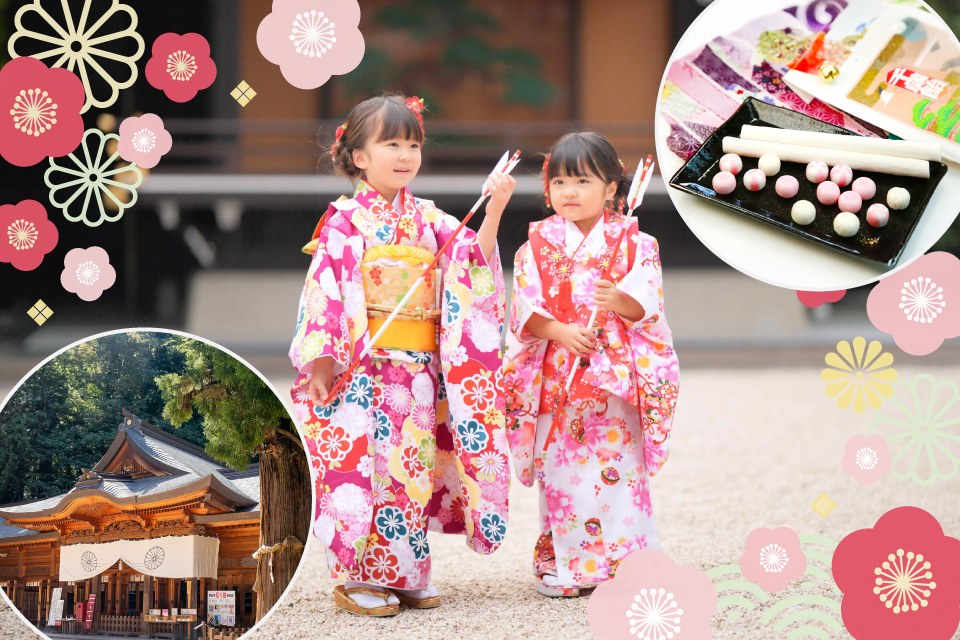

Every November, shrines across Japan come alive with children in dazzling kimono, parents snapping photos, and the soft rustle of autumn leaves.
This is the season of Shichi-Go-San—a heartfelt celebration of children’s growth at ages three, five, and seven.
More than a tradition, Shichi-Go-San is a cherished family ritual that blends spirituality, beauty, and joy.
Whether you’re a traveler in Japan or someone with a cultural curiosity, this guide will help you understand and appreciate the meaning, customs, and experiences that make this event so memorable.
What is Shichi Go San? Understanding the Japanese Family Ceremony
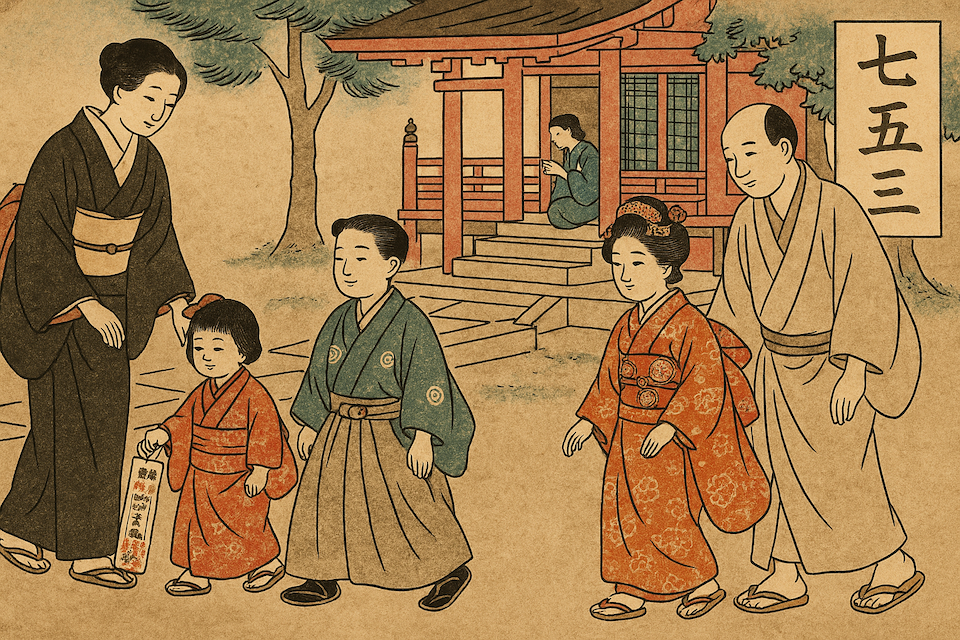
To truly understand Japanese family life, one must experience its intimate celebrations—and Shichi-Go-San is one of the most touching.
This section introduces the background of this tradition, explaining its origins, the meaning of the celebrated ages, and the spiritual customs that continue to connect families across generations.
The Origins and History of Shichi Go San
Shichi-Go-San traces its origins to the Heian period (794–1185), when it began as a noble custom. Back then, surviving early childhood was uncertain, and reaching ages 3, 5, or 7 was a cause for celebration.
Over time, the tradition spread among samurai families and eventually became popular nationwide.
In 1681, Shōgun Tokugawa Tsunayoshi’s visit to a shrine with his son on November 15 helped solidify this date for the occasion.
During the Meiji period, the practice became more widespread, evolving into the family-centered tradition still seen today, filled with gratitude and joy for a child’s healthy growth.
Why Ages 3, 5, and 7 Are Celebrated as Milestones
Each of these ages represents a meaningful developmental stage. Odd numbers are considered lucky in Japanese culture, but beyond numerology, the rituals associated with each age symbolize growth:
- Age 3: Children begin growing out their hair, marking the end of infancy (Kamioki 髪置き).
- Age 5: Boys wear a formal hakama for the first time (Hakamagi 袴着), representing their first steps toward maturity.
- Age 7: Girls start wearing the traditional obi sash (Obitoki 帯解き), a symbol of grace and girlhood.
These milestones are opportunities to recognize a child’s transition from toddlerhood into early childhood, surrounded by love, pride, and blessings.
The Role of Shinto Shrines and Prayers for Children’s Well-Being
At the heart of Shichi-Go-San is the shrine visit. Families head to their local Shinto shrine where a priest performs a simple blessing (kitō, 祈祷) to wish for the child’s health and happiness.
The ceremony is often accompanied by ritual gestures like bowing, clapping, and waving of onusa (ritual paper streamers).
The practice reflects the Shinto belief that children are under the care of ujigami (local guardian deities). Parents formally present their child to the gods, expressing gratitude for their growth.
Whether participating in a formal blessing or a quiet prayer, families experience a moment of spiritual reflection amid the beauty of autumn.

The Symbolism and Cultural Meaning of Shichi Go San

Beyond the colorful clothing and sweet treats lies a deeper layer of meaning. Shichi-Go-San reflects core Japanese values—health, longevity, and respect for life’s stages.
In this section, we’ll explore how the tradition serves as a rite of passage for young children and why it remains an emotional and unifying moment for families across Japan, filled with warmth and connection that transcend generations.
A Rite of Passage in Japanese Tradition for Children
Shichi-Go-San marks a gentle but meaningful rite of passage. It’s often described as a “mini coming-of-age” — the child is no longer a baby but not yet an adult.
Wearing traditional clothing and receiving blessings gives the child a sense of importance and pride, while offering the family a moment to reflect on the milestones already achieved, wrapped in love and gratitude.
Family Bonds and Generational Continuity
The celebration is a family affair. Parents, grandparents, and siblings often attend together, turning it into a joyful multi-generational event.
It’s not uncommon to hear grandparents reminiscing about their own Shichi-Go-San while watching the next generation walk into the shrine.
These moments create a powerful sense of continuity and heritage, filled with joy and family warmth.
How Shichi Go San Reflects Values of Growth, Health, and Longevity
At its core, Shichi-Go-San expresses Japan’s cultural emphasis on healthy development and long life. From shrine prayers to symbolic sweets like Chitose Ame (“thousand-year candy”), every part of the celebration reinforces these themes.
The red-and-white colors, cranes and turtles on gift bags, and evergreen imagery all symbolize longevity and fortune — gentle reminders to cherish life’s progress and celebrate the blessings of growth.

Clothing, Photography, and Experiencing Shichi Go San

For many, the joy of Shichi-Go-San begins the moment a child is dressed in traditional attire. From charming kimono to professional photo shoots, the experience is as visually stunning as it is meaningful.
Here, we explore how families prepare for the big day, blending old customs with modern convenience to create lasting memories filled with happiness and the beauty of tradition.
Traditional Kimono Styles for Children
Dressing up is one of the most memorable parts of Shichi-Go-San.
Girls typically wear kimono adorned with floral motifs and a decorative obi. Three-year-old girls might add a cute padded vest (hifu), while seven-year-olds wear a more formal ensemble.
Boys at age five wear haori jackets and hakama trousers, sometimes with playful or samurai-style designs.
It’s often their first time in formal wear, and they walk proudly beside parents dressed in suits or kimono, creating a stunning family portrait filled with pride and joy.
Rental Services and Modern Clothing Options
Many families opt for rental packages that include full outfits, dressing assistance, hairstyling, and photography. Rental shops and photo studios are especially busy in October and November, offering colorful kimono in every size.
Some kids choose modern prints or favorite characters subtly woven into traditional patterns.Some families prefer suits or dresses instead of kimono. The key is that the child feels special — and photos capture the joy.
Shrine Visits, Photography, and Seasonal Highlights
Shrines during Shichi-Go-San season are alive with color and tradition. Families queue for blessings, take commemorative photos under autumn leaves, and savor the moment together.
The mix of prayerful rituals and festive smiles creates an unforgettable experience, both for participants and those watching.
For travelers visiting Japan in autumn, popular spots like Meiji Jingu in Tokyo, Yasaka Shrine in Kyoto, or Sumiyoshi Taisha in Osaka often host numerous Shichi-Go-San families on weekends in early to mid-November.
While these are not tourist performances, quiet and respectful observation is welcomed, offering a rare and heartwarming look into authentic Japanese life.
Shichi Go San Candy: The Symbolic Chitose Ame

One bite of Chitose Ame — the long, red-and-white candy given during Shichi-Go-San — tells a story of tradition and hope.
This sweet treat is more than a souvenir; it’s an edible blessing wrapped in centuries of symbolism. Learn about its history, meaning, and where families find this beloved candy today.
Cultural Meaning and Symbolism of Chitose Ame
No Shichi-Go-San is complete without Chitose Ame (千歳飴) — long, red-and-white candy sticks given as blessings for longevity.
Wrapped in edible rice paper and tucked into bags decorated with cranes, turtles, and pine trees, they embody wishes for a long and happy life. For children, the candy is both a treat and a treasured souvenir of the day.
Where to Find Chitose Ame and How Families Enjoy It
Chitose Ame appears in shops and shrines from late October. Families often receive it during the shrine visit or buy it at supermarkets or traditional sweet shops.
Some bags are even personalized with the child’s name. After the blessing, many children proudly hold their candy bags for a photo before sharing the treat at home.
Shichi Go San Around the World: Celebrations Abroad
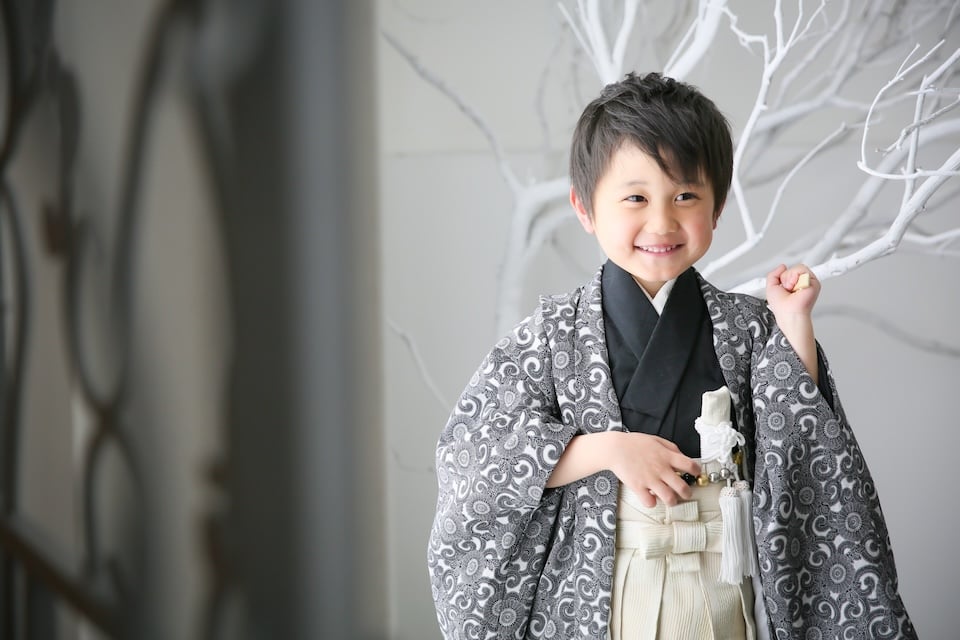
Shichi-Go-San’s spirit reaches far beyond Japan’s borders. From Hawai‘i to São Paulo, families around the world have preserved and adapted the tradition to suit their local communities.
Discover how the celebration thrives globally and how it compares to other cultural milestones for children.
How Japanese Families in Hawaii and Beyond Keep the Tradition
Japanese families overseas, especially in places like Hawai‘i and California, continue to celebrate Shichi-Go-San.
Organizations like the Japanese Cultural Center of Hawai‘i host annual events with kimono rentals, blessings, and photo sessions. It’s a chance for families to connect across generations, keeping their cultural roots alive.
Comparing Shichi Go San with Other Global Rites of Passage
While other cultures honor coming-of-age (like Latin America’s Quinceañera or Judaism’s Bar/Bat Mitzvah), Shichi-Go-San stands out for celebrating young children.
Its non-religious but deeply symbolic approach emphasizes the joy of early milestones and childhood growth.
Why Foreign Visitors Are Drawn to This Unique Family Ceremony
For international visitors, Shichi-Go-San offers a rare, authentic glimpse into Japanese life. Seeing children in vivid kimono, families gathered at shrines, and rituals performed with care makes for a touching scene. It’s a celebration not staged for tourists, but one that warmly welcomes respectful observation.
If you’re traveling in Japan during November, you may witness Shichi-Go-San celebrations at major shrines, especially on weekends.
Some cultural centers or hotels in cities like Tokyo, Kyoto, or Nara even offer guided shrine visits or kimono rental experiences for international guests to appreciate the tradition respectfully.
Experience Shichi-Go-San with MOTENAS JAPAN
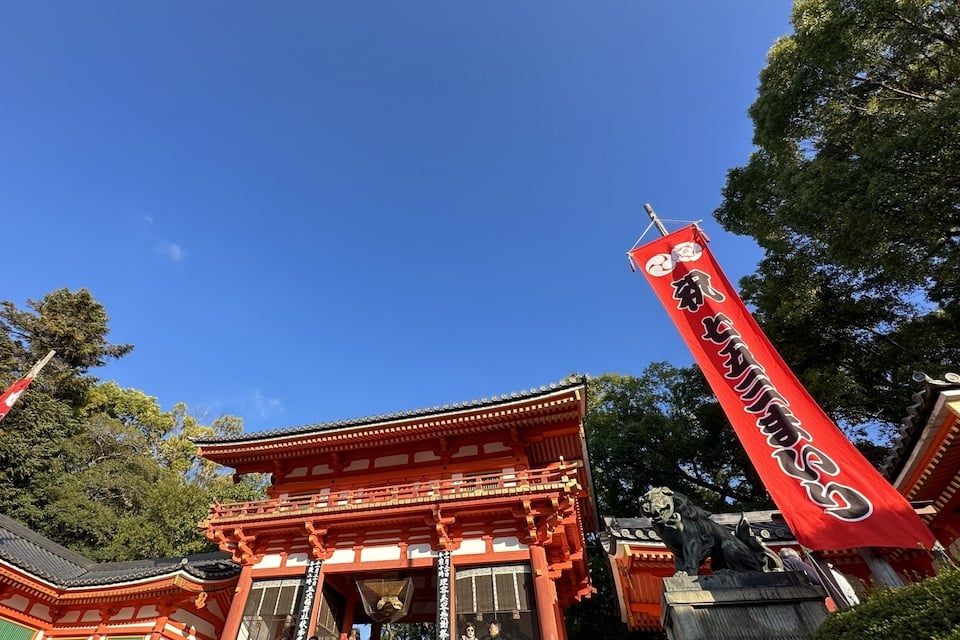
Want to do more than just watch Shichi-Go-San? With MOTENAS JAPAN, you can experience it firsthand through exclusive, tailor-made cultural programs designed for international guests.
Here’s what you can enjoy:
- Wear a Kimono and Visit a Shrine
Dress in traditional kimono with your child and visit a real Shinto shrine — guided in English to understand the rituals and meaning behind the celebration. - Join a Real Blessing Ceremony
Learn the cultural background of Shichi-Go-San, then take part in an authentic shrine blessing performed by a Shinto priest. - Capture the Moment
Enjoy a private photo shoot at a studio and shrine with a professional photographer — perfect for creating lasting memories.
All experiences are fully customizable for your group, whether you’re a family, traveler, or VIP guest.It’s a unique way to connect with Japan — not just through sightseeing, but through living tradition and authentic cultural experience.
Shichi Go San as a Cultural Journey for Families and Travelers
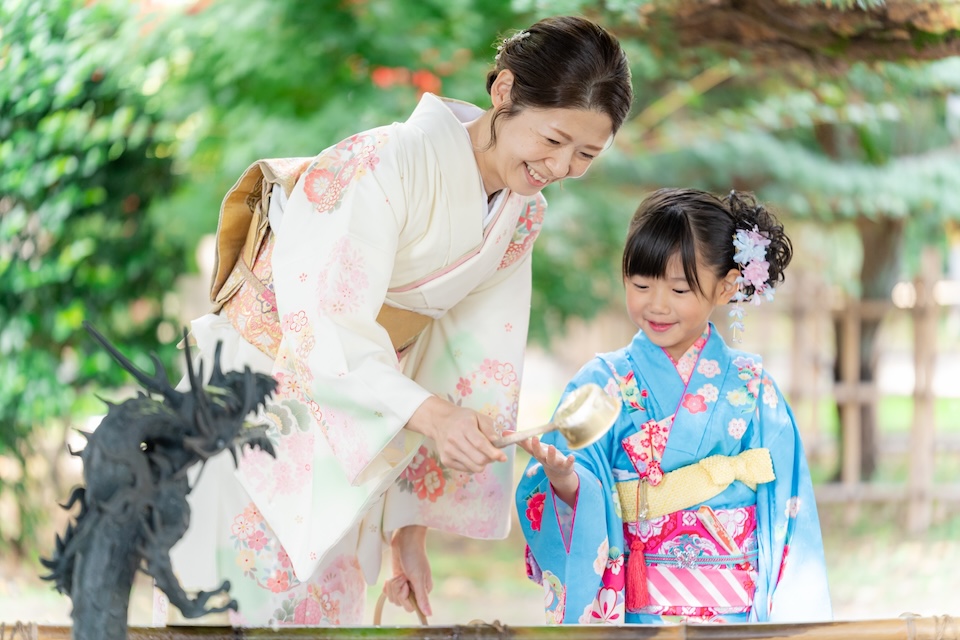
Shichi-Go-San is more than a celebration — it’s a cultural journey that embraces tradition, family, and heartfelt wishes for the future.
Whether you’re a local parent dressing your child in kimono or a visitor admiring the ceremony from afar, this event speaks to the universal values of love, growth, and connection.
Experiencing Shichi-Go-San is a beautiful way to understand Japanese culture: not just through history books, but through living tradition — woven into smiles, shared prayers, and sweet candy bags held tightly by little hands.


旅をこよなく愛するWebライター。アジアを中心に16の国にお邪魔しました(今後も更新予定)。
ワーホリを機にニュージーランドに数年滞在。帰国後は日本の魅力にとりつかれ、各地のホテルで勤務。
日本滞在が、より豊かで思い出深いものになるように、旅好きならではの視点で心を込めてお届けします!





